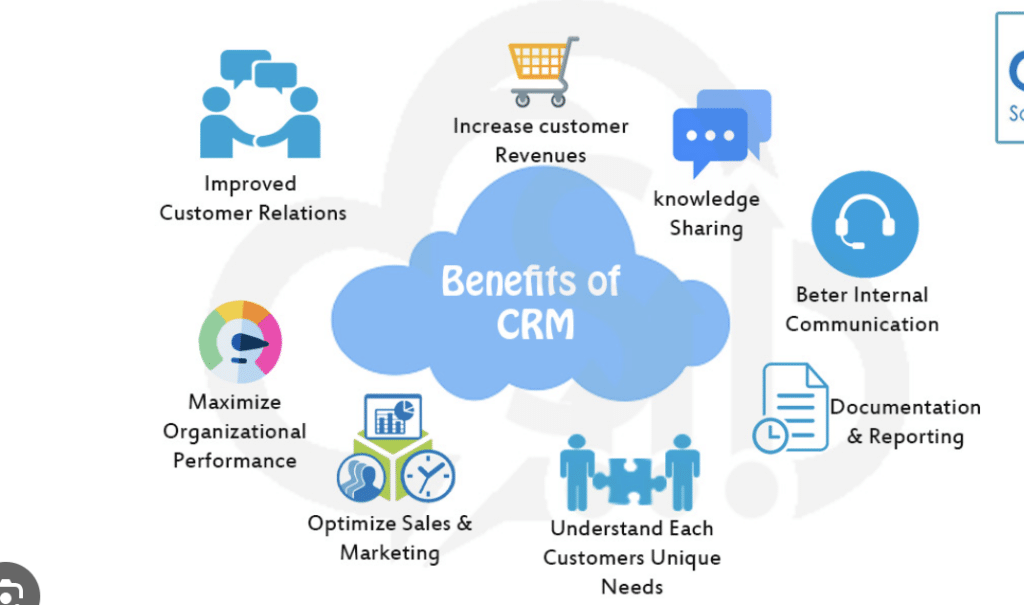Maximizing Profits with CRM Analytics and Insights
 Introduction
Introduction
In the fiercely competitive business landscape, companies are continuously seeking ways to maximize profits and gain a competitive edge. One powerful tool that has emerged as a game-changer is Customer Relationship Management (CRM) analytics. By harnessing the potential of CRM analytics and insights, businesses can make data-driven decisions, enhance customer experiences, and boost overall profitability. This article explores how CRM analytics can be leveraged to optimize sales, marketing strategies, and customer relationships while maximizing profits.
Understanding CRM Analytics
2.1. What is CRM Analytics?
CRM analytics refers to the process of analyzing customer data collected through various touchpoints and interactions with the business. It involves extracting valuable insights and patterns from this data to better understand customer behavior, preferences, and needs. This information helps companies tailor their strategies to cater to individual customers and drive customer loyalty.
2.2. Importance of CRM Analytics
CRM analytics is crucial as it provides businesses with a deeper understanding of their customer base. By comprehending customer preferences, pain points, and purchase patterns, companies can offer personalized products, services, and marketing campaigns, which leads to increased customer satisfaction and retention. Moreover, the insights gained from CRM analytics enable businesses to optimize their resources, reduce costs, and focus on high-potential opportunities.
Leveraging Customer Data
3.1. Collecting and Organizing Customer Data
The first step in maximizing profits with CRM analytics is collecting and organizing customer data efficiently. This data can include customer demographics, purchase history, communication preferences, and feedback. CRM software plays a crucial role in capturing and centralizing this data, making it easily accessible for analysis.
3.2. Analyzing Customer Behavior
Analyzing customer behavior helps businesses understand how customers interact with their brand. This involves tracking website visits, email engagement, social media interactions, and response to marketing campaigns. Such insights enable companies to anticipate customer needs and tailor marketing efforts accordingly.
Improving Sales and Marketing Strategies
4.1. Targeted Marketing Campaigns
Armed with CRM analytics, businesses can create targeted marketing campaigns. By delivering personalized content to specific customer segments, companies can increase engagement and conversion rates. This approach ensures that marketing efforts are more effective, leading to higher ROI.
4.2. Personalization and Customer Segmentation
Personalization is the cornerstone of successful marketing. CRM analytics enables companies to segment their customer base based on various attributes and preferences. By doing so, businesses can provide personalized product recommendations and offers, enhancing the overall customer experience.
4.3. Sales Performance Optimization
CRM analytics can also optimize sales performance by identifying high-value leads and forecasting sales trends. It helps sales teams focus on leads with the highest potential, increasing the chances of conversion and reducing the sales cycle.
Enhancing Customer Experience
5.1. Identifying Customer Pain Points
CRM analytics helps businesses identify and address customer pain points. By analyzing customer feedback and support interactions, companies can implement improvements that enhance customer satisfaction.
5.2. Proactive Customer Support
With CRM analytics, businesses can anticipate customer needs and provide proactive customer support. This means resolving issues before they escalate, leading to greater customer loyalty and retention.
5.3. Building Customer Loyalty
By leveraging CRM analytics, businesses can build stronger relationships with customers. Understanding individual preferences and purchase history allows companies to reward loyalty and create targeted loyalty programs.
Identifying Upselling and Cross-selling Opportunities
CRM analytics helps companies identify upselling and cross-selling opportunities. By analyzing customer purchase history and behavior, businesses can offer relevant product recommendations, thereby increasing the average transaction value.
Reducing Customer Churn
CRM analytics enables businesses to predict and reduce customer churn. By understanding customer behavior and detecting early signs of disengagement, companies can take proactive measures to retain valuable customers.
CRM Analytics for Forecasting and Planning
CRM analytics plays a pivotal role in forecasting sales and planning future business strategies. It helps businesses predict market trends, customer demand, and potential challenges, facilitating informed decision-making.
Integrating CRM Analytics with Business Intelligence
To fully harness the power of CRM analytics, businesses should integrate it with their existing Business Intelligence (BI) systems. This integration enhances data analysis and ensures a comprehensive view of the organization’s performance.
The Role of Artificial Intelligence in CRM Analytics
Artificial Intelligence (AI) is revolutionizing CRM analytics. AI-powered algorithms can analyze vast amounts of customer data quickly, uncovering hidden patterns and generating actionable insights.
Ensuring Data Security and Privacy
As businesses collect and store large volumes of customer data, ensuring data security and privacy becomes paramount. Companies must adopt robust security measures to protect sensitive customer information.
Measuring the Success of CRM Analytics Implementation
To evaluate the effectiveness of CRM analytics, businesses should set clear performance metrics. Regularly assessing key performance indicators (KPIs) helps identify areas for improvement and ensures continued growth.
Overcoming Challenges in CRM Analytics
While CRM analytics offers immense potential, its successful implementation can face challenges. Businesses should be prepared to overcome obstacles such as data integration, data quality, and employee resistance.
Conclusion
CRM analytics is a game-changer for businesses seeking to maximize profits and foster lasting customer relationships. By understanding customer behavior, personalizing marketing efforts, and optimizing sales strategies, companies can unlock their full potential and gain a competitive advantage in the market.
FAQs
1. What is CRM analytics, and why is it essential for businesses?
CRM analytics involves analyzing customer data to understand their behavior and preferences. It is essential for businesses as it allows them to make data-driven decisions, improve customer experiences, and maximize profits.
2. How can CRM analytics help in improving marketing campaigns?
CRM analytics enables targeted marketing campaigns by segmenting customers based on preferences. This results in higher engagement and conversion rates.
3. How does CRM analytics reduce customer churn?
CRM analytics helps businesses identify early signs of disengagement, allowing them to take proactive measures to retain customers and reduce churn.
4. What role does Artificial Intelligence play in CRM analytics?
Artificial Intelligence enhances CRM analytics by